So you’ve finally decided to get that kitchen remodel you’ve been wanting — you found the best kitchen renovation specialist near you (ModerNash, of course), rocked out a perfectly functional kitchen design for your needs, picked out your cabinets and appliances, maybe you even chose some stunning quartz countertops. You’re anxious to see it all completed.
But…before you get to enjoy that sparkling new kitchen remodel, you have to survive a few weeks without any kitchen at all.
If you’re someone who can stomach eating out every meal for a month, kudos to you. For the rest of us, surviving without a kitchen during a remodel can be challenging.
Hopefully you’ve chosen the right cabinetry (we recommend a combination of Semihandmade and IKEA® kitchen cabinets, or semi-custom cabinets as we call them) and have hired ModerNash to source the materials and install your cabinetry, because you know your kitchen will be done as quickly and excellently as possible — and that’s one less thing to worry about.
If you haven’t started your remodel and need design assistance and a cabinetry quote make sure to request your free kitchen consultation before you get too far along, otherwise, while you’re watching that picture-perfect kitchen take shape, here are some tips to help you get through your time without a kitchen.

Set up a Temporary Kitchen:
- Designate a space in your home as a temporary kitchen. This could be a dining room, a utility room, or even a corner of your living room. Keep in mind you’ll want easy access to water. Your actual kitchen will be loud during this time, with contractors in and out, so that may influence your chosen temporary location as well.
- Place a folding table or portable kitchen island in this space to serve as a makeshift countertop and workspace.
- Set up essential appliances, like a microwave, toaster oven, and electric kettle, in your temporary kitchen.

Stock Up on Disposable Supplies:
- Use disposable plates, cups, and utensils to minimize the need for washing dishes.
- Buy paper towels, disposable cleaning wipes, and trash bags for easy cleanup.
- Consider using disposable aluminum pans for cooking and reheating meals.
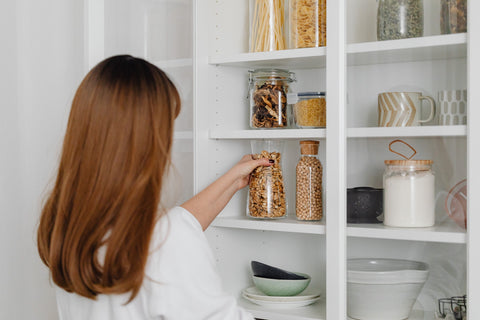
Create a Mini Pantry:
- Set up a shelf or a small storage area in your temporary kitchen to store non-perishable food items.
- Stock up on canned goods, pasta, rice, and other items that don’t require refrigeration.
- Use clear containers to keep track of your supplies.
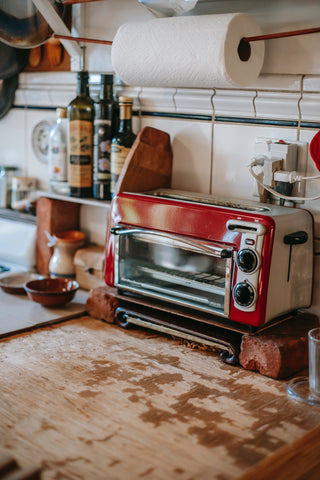
Use Small Appliances:
- Invest in a countertop hot plate, slow cooker, or electric griddle to prepare simple meals.
- A microwave and toaster oven can also be incredibly versatile for cooking and reheating.
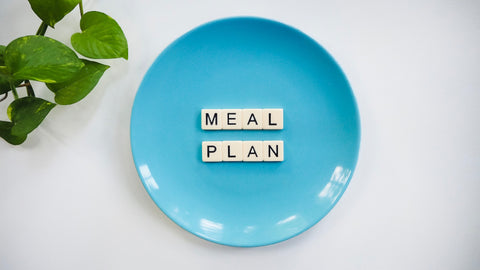
Meal Planning:
- Plan your meals in advance to minimize food waste.
- Opt for easy-to-make dishes that don’t require extensive preparation or cooking time.
- Pick up some frozen pre-made meals that can be cooked in your toaster oven (mmm…lasagna)
- Consider batch cooking when you have access to a friend’s or family member’s kitchen.
- Grill out for meals that create less clean up.
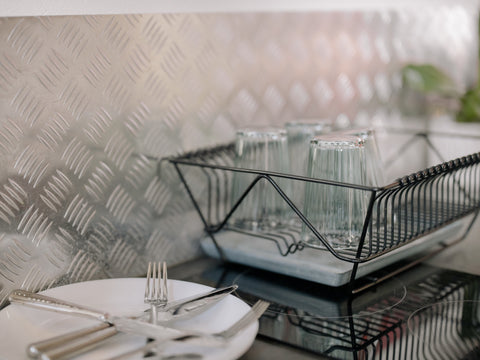
Wash Dishes Efficiently:
- If you have access to a sink or bathroom, use it for washing dishes, or use disposable items to reduce dishwashing.
- Consider getting an extra large dish-drying rack or mat since you won’t have access to a dishwasher.

Set Up a Water Station:
- If your water supply in the kitchen is affected, set up a water station with a large container of clean water for drinking and cooking.
- Keep a kettle or electric water heater for hot water.
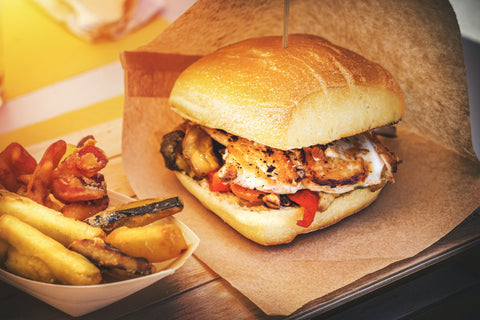
Eating Out or Takeout:
- Treat yourself to the occasional meal at a restaurant or order takeout when you need a break from cooking in your makeshift kitchen.
- Explore local food delivery services for convenience.
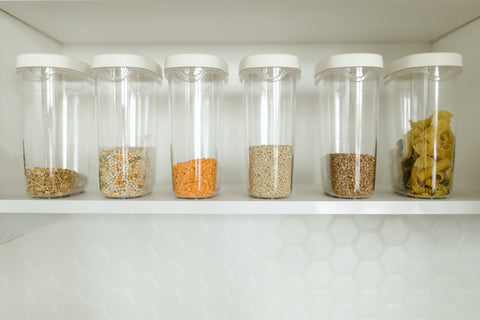
Stay Organized:
- Label your temporary kitchen items and storage containers to stay organized and make the transition back to your regular kitchen easier.
- Keep a list of essential items you’ll need when your kitchen is back in order.

Stay Patient and Positive:
- Remodeling can be stressful, but remember that it’s temporary. Focus on the end result, and try to stay positive throughout the process.
If you’ve hired the right kitchen remodeling service, they should be upfront with you on how long they expect your remodel to take.
During that time, you’ll need to adapt to a different routine. But with these tips we hope you’re better prepared to maintain a sense of normalcy until your kitchen is back in working order and you’re enjoying a hot cup of morning coffee in your gorgeous new kitchen.
Cheers to your new kitchen!!
FREE KITCHEN DESIGN CONSULTATION


